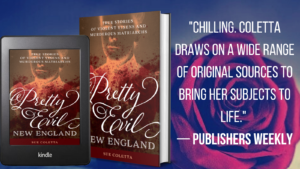 Misdirection is the intentional deflection of attention for the purpose of disguise, and it’s a vital literary device. To plant and disguise a clue so the reader doesn’t realize its importance takes time and finesse.
Misdirection is the intentional deflection of attention for the purpose of disguise, and it’s a vital literary device. To plant and disguise a clue so the reader doesn’t realize its importance takes time and finesse.
The most important thing to remember is to play fair. Clues must be in plain sight. We cannot reveal a clue that wasn’t visible earlier. That’s cheating.
A few years ago, I read a novel about [can’t name the profession without giving away the title]. The protagonist located the dead and solved every mystery with invisible clues. After I whipped my Kindle across the room, I took a deep breath and skimmed the story searching for the clues. Never found one. Not one! The author’s name now sits at the pinnacle of my Do Not Read list.
A key feature of good misdirection means you brought attention to the clue, and the reader still missed it.
A magician uses three types of misdirection:
- Time: The magician has the silk scarf balled in one fist before he begins the trick.
- Place: The magician draws your attention to his right hand while the real trick is happening in his left.
- Intent: The magician leads you to the decision he wants, but afterward you’ll swear you had a choice.
Notice any similarities to writing?
Misdirection can be either external or internal. External would be when the author misdirects the reader. Internal is when a character misdirects another character.
Misdirection is different than misinformation. We should never outright lie to the reader. Rather, we let them lie to themselves by disguising the clue(s) as inconsequential.
How do we do that?
When you come to a part of the story where nothing major occurs, slip in a clue. Or include the detail/clue while fleshing out a character’s life.
Examples:
One character chats with another as they drive to a designated location. Is the locale a clue in and of itself?
What about the title of the book? The reader has seen the title numerous times, yet she never gave it much thought until the protagonist reveals its meaning to the plot.
Clandestine lovers meet in a hideaway. While there, one of the characters notices a symbol or sign. Later in the story, she finds another clue that relates to the sign or symbol. Only now, she has enough experience to interpret its true meaning.
A kidnapper chalks an X on a park bench to signal the drop-off spot. What if a stray dog approaches the kidnapper? If he reads the dog’s tag to find his human, the clue takes center stage, yet it’s disguised as inconsequential.

In all four examples the arrival of the clue seems insignificant at first. The reader will notice the clue because we’ve drawn attention to it, but we’ve framed it in a way that allows the character to dismiss it. Thus, the reader will, too.
False Trails
The character knows the clue is important when she finds it, but she misinterprets its meaning, leading her down a dead end.
What if we need to supply information on a certain topic, but we don’t want the reader to understand why yet? If we take the clue out of context and present it as something else—something innocuous or insignificant—we’ve misdirected the reader to reach the wrong conclusion.
An important factor of misdirection is that the disguise must make sense within the confines of the scene. It should also further the plot in some way.
“Misdirection can be used either strategically or tactically. Strategically to change the whole direction of a story, to send it off into a new and different world, and have the reader realize that it’s been headed that way all along. Tactically to conceal, obscure, obfuscate, and camouflage one important fact, to save it for later revelation.”
— The Writer magazine
Character Misdirection
 Character misdirection is when the protagonist (and reader) believes a secondary character fulfills one role when, in fact, he fulfills the opposite.
Character misdirection is when the protagonist (and reader) believes a secondary character fulfills one role when, in fact, he fulfills the opposite.
Two types of character misdirection.
- False Ally
- False Enemy
These two characters are not what they seem on the surface. They provide opportunities for dichotomy, juxtaposition, insights into the protagonist, theme, plot, and plot twists. They’re useful characters and so much fun to write.
A false ally is a character who acts like they’re on the protagonist’s side when they really have ulterior motives. The protagonist trusts the false ally. The reader will, too. Until the moment when the character unmasks, revealing their false façade and true intention.
A false enemy is a character the protagonist does not trust. Past experiences with this character warn the protagonist to be wary. But this time, the false enemy wants to help the protagonist.
When Hannibal Lecter tries to help Clarice, she’s leery about trusting a serial killing cannibal. The reader is too.
What type of character is Hannibal Lecter, a false ally or false enemy?
An argument could be made for both. On one hand, he acts like a false enemy, but he does have his own agenda. Thomas Harris blurred the lines between the two. What emerged is a multifaceted character that we’ve analyzed for years.
When crafting a false ally or false enemy, it’s fine to fit the character into one of these roles. Or, like Harris, add shades of gray.
Mastering the art of misdirection is an important skill. It’s especially important for mysteries and thrillers. I hope this post churns up new ideas for you.
Do you have a false ally or false enemy in your WIP? What are some ways you’ve employed misdirection?
This is my final post of 2021. Wishing you all a joyous holiday season. See ya in the New Year!
 Female killers are often portrayed as caricatures: Black Widows, Angels of Death, or Femme Fatales. But the real stories of these women are much more complex. In Pretty Evil New England, true crime author Sue Coletta tells the story of these five women, from broken childhoods to first brushes with death, and she examines the overwhelming urges that propelled these women to take the lives of more than one-hundred innocent victims. If you enjoy narrative nonfiction/true crime, Pretty Evil New England is on sale for $1.99. Limited time. On Wednesday, Dec. 15, the price returns to full retail: $13.99.
Female killers are often portrayed as caricatures: Black Widows, Angels of Death, or Femme Fatales. But the real stories of these women are much more complex. In Pretty Evil New England, true crime author Sue Coletta tells the story of these five women, from broken childhoods to first brushes with death, and she examines the overwhelming urges that propelled these women to take the lives of more than one-hundred innocent victims. If you enjoy narrative nonfiction/true crime, Pretty Evil New England is on sale for $1.99. Limited time. On Wednesday, Dec. 15, the price returns to full retail: $13.99.

Good morning, Sue. Thanks so much for an excellent road map of how the job is done. Misdirection is noting that there is nothing up your sleeve when you’re not wearing any.
Two authors who are excellent at practicing the art of misdirection and who do not get the credit, acclaim, and commercial success they otherwise deserve are William Gay and Dan Cheon. Gay, alas, is no longer with us but leaves behind a body of work, most of it set in southern Tennessee, that is staggering in terms of quality if not quantity. Cheon’s stories and novels are set in Nebraska and Cleveland and are genre-blurring. He is still at it and getting better every minute.
Merry Christmas and Happy New Year to you et al. the wee Collettas, Sue!
Mornin’, Joe! Thanks for mentioning Gay and Cheon. Always looking for great reads. 🙂 Merry Christmas and Happy New Year to you and yours, SJ!
Nice capsule of misdirection techniques.
In my WIP, I have a false ally and a false enemy.
Thanks, Sue Ann. You included both in your WIP? Awesome!
Great post, Sue. Thanks for the way you’ve dissected and presented this topic.
In my second book I used a false ally who was in plain sight cleaning the streets, while she emotionally bonded with the little band of investigators and simultaneously led them astray with one clue after another, at the same time she was arranging their demise.
Thanks for the link to Pretty Evil. I look forward to reading it.
Have a wonderful Christmas and holiday break!
Thanks, Steve. Ooh, perfect way to use a false ally. Bravo!
Wishing you and yours a fabulous Christmas and holiday break, too!
Great information, Sue. As a non-plotter, I often go back and plant these clues and/or red herrings. Often, especially with characters, I find they’re already there. If I know them ahead of time, I fear I get heavy-handed and make them too obvious.
I hear ya, Terry. I’m always worried the clues are too obvious. They pop right out to me, but my editor rarely, if ever, spots them on the first read. She knows all about my paranoia, and is quick to put my mind at ease. 🙂
Hi, Sue. As an amateur closeup magician, misdirection is my meat. I love sending coins through a solid table … in plain sight! Or turning that Ace into a King before your very eyes.
In mythic terms the false character is a “shapeshifter.” We’ve seen it so many times it’s hard to pull off: the detective’s partner … the “best friend” etc. Often Mrs. B and I will watch a crime show and in the first act a nice fellow will happen by and we’ll look at each other and say, “He did it.” Or a woman will be portrayed as a victim. “She did it.”
We’re right 86.3% of the time.
One trick is to increase the cast of minor characters. That makes it easier to “hide” a shapeshifter.
In my last novel I got to the end and didn’t like who I planned on as the ultimate villain. So I just went back and looked at the minor characters and found the perfect shapeshifter. The only tweak was to come up with a motive and make sure it made sense in the overall story. Happily, it did.
Haha. You two sound like me and Bob!
You’re right, of course. Hiding a false ally or shapeshifter isn’t easy, but oh, so, fun. I once polled readers of MARRED to see who they thought the hacker was (a thread left for a future book). 80% thought it was the same minor character. I had never even considered using that character as a false ally. Good thing. Truth be told, at that point I had no idea who the hacker was, either. The character didn’t reveal themselves till I was writing SCATHED (book 3). Oddly enough, all the breadcrumbs were there in the first two books, waiting for me to pick them up. Love when that happens!
“We’re right 86.3% of the time.”
There’s a coincidence for you! Studies have shown that 86.3% of all statistics are made up on the spot. What are the odds?
Touché!
Terrific post, Sue. I don’t have any true false friends or false enemies in the library cozy I’m revising, but I’m working on ensuring plenty of red herrings. My dear friend and writer’s group member Wendy (also a mystery lover) dubbed this “the herring stew,” which I think is brilliant.
That misdirection is so important, and aided, I think, by misinterpreting information about potential suspects, because usually each has something to hide, and their suspicious behavior draws the sleuth’s attention.
Have a wonderful holiday season and a very happy new year!
“The herring stew.” Brilliant indeed, Dale. Yes, misinterpretation is our friend. 🙂
Wishing you and yours a wonderful holiday, too, and happy New Year!
Amazing post. I’ve honestly never considered false allies or enemies in my WIP, but now you got me thinking.
I knew early on that mysteries would be hard to write because of the difficulty of planting clues. Turns out, laying down just the right amount of backstory and character reveals are just as difficult, though I still don’t plan on writing a mystery any time soon.
Thanks, AZAli! Thrilled that I fired up those creative juices. 🙂
True. Mysteries and thrillers do have a lot of moving parts. They’re so much fun to write, though.
Skillful misdirection is a big chunk of the fun of reading and writing mysteries. And yes, it’s a delicate balancing act to mislead while not directly lying.
You’re so right, Mike. Wishing you and yours a wonderful holiday season! See ya on Twitter. 😉
Great information, Sue! I love good mysteries because the reader has the information to solve the crime, but rarely concentrates on the right clues.
I included a false ally in my second novel, and adding that misdirection was great fun. Most people who reviewed the book said they were surprised when the villain stepped out of the shadows.
Thanks, Kay! I love mysteries and thrillers for the same reason. In movies I often spot the false ally right away. Novels are much more challenging.
Sounds like you did a great job with your false ally. Kudos!
Fascinating topic, Sue. Thanks! Interesting timing, too. Yesterday, I stumbled on a talk given by Charlie Munger titled The Philosophy of Misjudgment. For those who don’t recognize the name, Charlie Munger is the 97-year-old multi-billionaire other half of Berkshire Hathaway and the genius who taught Warren Buffet how to invest.
Mr. Munger goes into the psychological manipulation that magicians use to fool people by using “contrast-based error” or diverting perception/cognition. There is far too much detail about life’s red herrings in the piece to set out here, but I find his information very applicable to fiction writing and intentionally/creatively misleading the reader only to surprise them – pleasantly – in the end. One bit is examining how David Copperfield made the Statue of Liberty disappear before a live audience’s eyes.
The talk is reproduced as a transcript. Here’s the pdf link if anyone’s interested: https://fsmisc.s3.ca-central-1.amazonaws.com/great-talks/The+Psychology+of+Human+Misjudment.pdf
Thanks for the link, Garry! Sounds like a fascinating read.
Never seen this “trick” of the trade addressed so well. Great post. To which I can add only one caveat: Misdirection is not the same as confusing the reader. 🙂
Wow. Thanks so much, Kris. You just made my day. 🙂 Excellent addition, too. Happy Holidays!
WTG Sue! I’ve not published a mystery, yet, tho I do have a WIP, a Mystery/Romance/Western, on a back burner, about 86.3% complete.
My mother once lent me a mystery (title lost in the dust of my inner attic,) that she claimed she’d solved just halfway through. I told her I’d fingered the villain before opening it. How? I showed her the cover, which clearly portrayed one character holding a phial behind his/her back. Oops?
“One character chats with another as they drive to a designated location….”
Great ploy. Besides little titbits of conversation, there are the fact that the driver can operate a stick, his wearing driving gloves, the spot of sunlight focused on the dashboard by his loose spectacles, the unusual key fob, the number of suitcases they crammed into the trunk, the kipper aroma of the interior, the sound of the auto’s 12-cyl Lycoming aircraft engine, the missing floor mat, and having to stop for petrol twice on the way to Crinkley Bottom, et cet’ra.
Haha. Oops is right!
Excellent additions, J. Thank you. 🙂
Superb post, Sue!
One of my beta readers who’s almost 80 has an uncanny knack for seeing through my misdirections, false allies, and false friends. I keep trying to stump her but she catches me every time. She tells me exactly which page tipped her off so I go back rewrite to obscure a little more.
Just gave her the first draft of my WIP and I’m eager to see if her record will stand.
Merry Christmas to you and your family. See ya in the New Year!
Your beta reader sounds like a keeper, Debbie! Thank you!
Wishing you a wonderful Christmas (or belated Hanukkah) and Happy New Year!
I just recalled there’s a locked room murder mystery plot line in my WWII thriller. There was little point in red herrings or misdirection, since the victim was was found dead in Adolf Hitler’s apartment building, shot with his pistol, after an argument. Motive? Probably identical to the Holocaust. (The Munich police got right on it. It’s still on their books as a suicide.)
Wow. Sounds like it’s based on a real case. Good for you!
Yes, it’s a real case, the murder of Geli Raubal. It’s a How Dunit, as well as a Why Dunit. I solved it by studying Hitler’s car.
Wow. Fantastic!
A always give enough clues that if the reader is paying attention, they can figure out whodunnit. But they are hidden. And sometimes I don’t know who did it until the end, and then I have to go back and beef up that character’s part a little. 😉
Exactly, Patricia. I do the same if the story takes an unexpected twist that I had not foreseen in the planning stage. 🙂
Great post today, Sue. So perfectly rendered in clear detail. I love these kinds of posts which you and Jim and Kristy are particularly good at – actually sharing and teaching points of craft, instead of the “this is how I do it, even though I’m not sure what I’m doing” posts. I appreciate you!
Thank you, Larry! Means a lot. I was just thinking about you. Hope you’re doing well, happy, and are enjoying the holidays. I miss you! ?